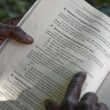While rates of COVID-19 might increase in winter, research has shown that it is not necessarily because the virus thrives in the cold.
Cold weather, COVID-19 and respiratory diseases
· Colder weather has long been associated with coughs, colds and other respiratory illnesses. Seasonal influenza and common colds peak throughout the winter months in both the Southern and the Northern hemispheres.
· Given many common colds are caused by coronaviruses, it seems logical that cases of SARS-CoV-2, the virus that causes COVID-19, would be driven upward as temperatures decline.
· While there are plausible biological explanations for why this occurs, research has not been definitive on the effect of temperature on SARS-CoV-2, considering there is not enough data to make solid conclusions.
· Behavioural factors, such as spending more time indoors where viruses are more easily transmitted, are also at play.
Why do cases often rise in winter?
Biological explanations
· Coronaviruses survive longer in environments of decreased sunlight, lower temperatures and lower relative humidity.
· So the amount of active virus in the environment might be greater during the winter months, and in cold, dry climates.
· In environments with low humidity, there is less water vapour in the air (in other words, the air is dry), and when a COVID-19 positive person coughs, aerosolised particles stay suspended for much longer in the air. This increases the potential exposure and transmission to other people.
· One study from 2020 reported a link between COVID-19 and lower humidity. The researchers noted a 1% decrease in humidity could increase the number of COVID-19 cases by 6%.
· Another recent study from the United States and China found higher temperatures and higher relative humidity potentially suppressed COVID-19 transmission.
Behavioural explanations
· A range of other factors which coincide with winter are likely to have a greater impact on transmission than how the virus behaves in cold climates.
· As the colder winter months arrive, we flee the outdoors, instead opting for indoor activities.
· Some indoor spaces – including shops, restaurants, and homes – are poorly ventilated, allowing colds, flus and other respiratory illnesses such as COVID to spread more easily.
· Respiratory illnesses spread more easily indoors. In the northern hemisphere, winter also coincides with the holiday season, which sees significant amounts of travel, both international and domestic, and a significant uptick in large social gatherings.








